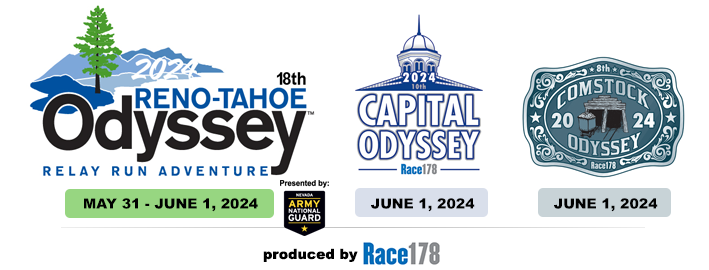- The course is divided into 36 legs. At the end of each leg is a runner exchange area. That is where one runner ends and the next runner begins.
- Runners carry a team wristband and pass that to each other at the exchange points. The wristband takes the place of a baton.
- Teams with 12 runners run in order through their line-up one through 12 to complete the relay course. After running the first 12 legs, the runners repeat this process and run the second and third groups of 12 legs. Each runner should run 3 legs of the 36 leg course.
- Let’s focus on the vehicles for a moment. Each team has two vehicles, with 6 runners in each vehicle. The first vehicle (“Van 1”) with 6 runners covers the first 6 legs. The second vehicle (“Van 2”) with the other 6 runners covers the next 6 legs. The vehicles will leapfrog along the course alternating covering each group of 6 legs until the team finishes the course. Accordingly, the runners in Van 1 cover Legs 1-6, 13-18, and 25-30. The runners in Van 2 cover Legs 7-12, 19-24, and 31-36.
- At the end of each group of 6 legs is a vehicle exchange point. That is where one group of 6 runners (Van 1) completes running the prior 6 legs and the team’s other runners (Van 2) begin to run the next group of 6 legs. The vehicle exchange points are 6, 12, 18, 24 and 30.
- Part of the challenge of a relay like this one is to estimate how long it will take each runner to run his or her leg. Teams need to be at the next runner exchange point when the runner arrives there. In addition, the one team vehicle (Van 1) needs to be at the vehicle exchange point when the other team vehicle (Van 2) arrives. You might find the RTO Team Pace and Exchange Point Worksheet helpful.
- Each team must provide its own supplies to support its runners. Plan to leave room in your team vehicles for these supplies. Do not plan on any aid stations along the course. The tab labeled Checklist is helpful.
